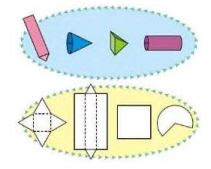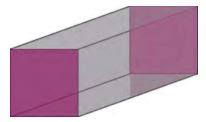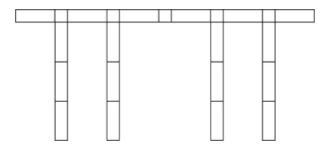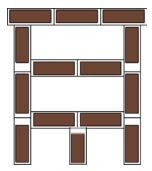NCERT Solutions for Chapter 9 Boxes And Sketches Class 5 Maths

Chapter Name | Boxes And Sketches NCERT Solutions |
Class | CBSE Class 5 |
Textbook Name | Maths |
Related Readings |
|
Page No 127:
Question 1: Buddha wants to make a paper cube using a squared sheet. He knows that all the faces of a cube are squares. He draws two different shapes.
- Will both these shapes fold into a cube?
- Draw at least one more shape which can fold into a cube.
- What will be the area of each face of the cube?
- Draw one shape which will not fold into a cube.
- Look around and discuss which things around you look like a cube. List a few.
Answer:
- Yes, both the shapes will fold into a cube.
- The shape which can fold into a cube is shown below.

- We know that, each face of the cube is a small square. Area of small square is 1 square cm. Thus, the area of each face of the cube is 1 square cm.
- The shape which cannot fold into a cube is shown below.

- The shape of die, sugar cubes, ice cubes, etc. resembles that of a cube.
Page No 128:
Question 1: All boxes are not cubes. Here are some different kinds of boxes. Match each shape below with a box into which it will fold.

Page No 129:
Question 1:

- Which is the front side of her house? How many windows are there on the front side?
Here are four deep drawings of houses.
- Which one is Vibha's house?
- Why do the other three deep drawings not match the floor map? Discuss.
Answer:

- Front side of Vibha's house is encircled in the above image. There are two windows and one door on the front side of the house.
- The front side of Vibha's house has one door and two windows.
- The figure (c) represents Vibha's house.
Page No 130:
Question 1: Look at this floor map of a house. Make doors and windows on the deep drawing of this house.
- Are there any windows you couldn't show on the deep drawing? Circle them on the floor map.
Answer:
The doors and windows on the deep drawing of the house is shown below.

There are 2 windows that could not be shown on the deep drawing. These windows are encircled on the floor map as shown below.
Question 2: Soumitro and his friends made deep drawings of a cube. These are their drawings.
- Which of the drawings look correct to you? Discuss.
- Can you add some lines to make drawing (f) into a deep drawing of the cube?
Answer:
- The drawings (d), (e) and (g) are correct.
- The deep drawing of a cube after adding lines to figure (f) is shown below:

Question 1: This cut-out is folded to make a cube.


The correct deep drawings of the given cube are:

Question 2: Make a deep drawing of a box which looks like this.

Answer:
The deep drawing of the given box is shown below.

Question 1:
- If you look at the bridge from the top, how will it look? Choose the right drawing below:
- Look at the photo and try to make a deep drawing of this bridge.
Answer:
The top view of the bridge is shown below.


- From the top
- From the front
- From the side

The top view of the bridge is shown below.




- Also make a deep drawing of the model in your notebook.
Answer:
Disclaimer: Students are advised to prepare the answer on their own.
Question 4: How many cubes are needed to make this interesting model?
- Here are some drawings of the model. Mark the correct top view drawing with 'T' and the correct side view drawing with 'S'.
Answer:
Number of cubes in the top layer = 4 + 5 = 9
Number of cubes in the second layer from top = 4 + 5 + 3 + 4 = 16
Number of cubes in the third layer from top 4 + 5 + 3 + 4 + 2 + 3 = 21
Number of cubes in the fourth layer from top = 4 + 5 + 3 + 4 + 2 + 3 + 2 + 1 = 24
Number of cubes in the bottom layer = 4 + 5 + 3 + 4 + 2 + 3 + 2 + 1 + 1 = 25
Total number of cubes in the model = 9 + 16 + 21 + 24 + 25 = 95
The correct drawing for the top and side view is given below:









